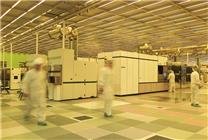Summary
- Intel is attracting investments from prominent companies, including Apple and TSMC, amidst a shifting semiconductor landscape.
- TSMC’s potential investment in Intel remains unclear, as the companies have reportedly not engaged in discussions.
- Industry analysts suggest that strengthening the U.S. semiconductor sector may require investments directly within domestic borders rather than international partnerships.
On October 1, reports surfaced detailing Intel’s quest for funding from influential tech giants, notably Apple and Taiwan Semiconductor Manufacturing Company (TSMC). Given Intel’s critical role in the U.S. semiconductor industry, the interest from American firms is expected. However, TSMC’s involvement is particularly noteworthy, as it places them in the intriguing position of being both a collaborator and a rival to Intel.
In a recent statement, TSMC’s CEO, C.C. Wei, firmly dismissed the notion of any potential investment in Intel, asserting that no discussions concerning joint ventures or financial partnerships have taken place between the two companies. Despite this denial, the question remains—will TSMC ever consider investing in Intel?
Industry analyst Ming-Chi Kuo weighs in on this matter, highlighting the broader context of the U.S. government’s ambitions to bolster its semiconductor capabilities. Kuo underscores that any investment or collaboration with TSMC would likely fall short of addressing the pressing need for domestic production improvements. His commentary suggests that direct investments within the U.S. to enhance manufacturing capacity are far superior to international collaborations.
Kuo posits that the likelihood of TSMC investing in Intel is low, primarily due to the smaller scale of potential investments. For instance, NVIDIA’s recent contribution was a mere $5 billion, with Apple expected to match this level. In contrast, TSMC has committed a staggering $165 billion to build semiconductor facilities in the United States. This discrepancy in investment scales illustrates both a strategic divergence and the significant resources required to modernize U.S. semiconductor production.
Moreover, TSMC’s plans extend beyond constructing production lines for existing 5nm and 4nm processes; it also aims to establish advanced packaging plants and next-generation fabrication capabilities. Notably, TSMC will look to shift production of the A16 and A14 processes to U.S. facilities, which could constitute around one-third of their operational capacity.
Recent remarks from the U.S. Secretary of Commerce have accentuated the urgency of this issue. With Taiwan-based companies like TSMC dominating 95% of the global advanced semiconductor landscape, the risk of over-reliance on foreign production is stark. The U.S. aims to mitigate these risks significantly, advocating for a shift in production capabilities to domestic territories to protect its technological sovereignty.
This situation reflects a dynamic interplay in the semiconductor supply chain amidst geopolitical tensions and competitive pressures. As major players like Intel, Apple, and TSMC navigate this landscape, the future of semiconductor investments in the U.S. remains uncertain yet pivotal. The efforts to build a robust domestic semiconductor industry will not only bolster the U.S. economy but also safeguard its national security interests.
In conclusion, while companies like Intel actively seek partnerships to navigate a challenging environment, the need for direct domestic investment appears more critical than ever. As TSMC continues its investment in U.S. infrastructure, the potential for collaboration with Intel may remain a topic of speculation rather than a reality.
Stay tuned for further developments in the semiconductor industry, as this sector continues to evolve rapidly.





